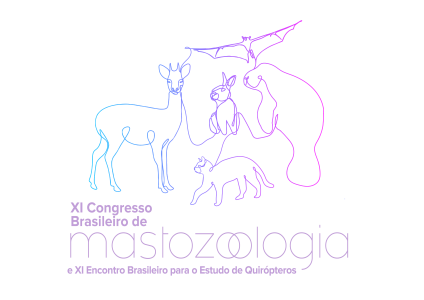Dados do Trabalho
Título:
MORPHOLOGICAL VARIATION OF SIGMODONTINE RODENTS FORM HIGH LANDS ANDES OF ANCASH DEPARTMENT IN PERU
Resumo:
Cordillera Blanca is one of the highest areas on the Andes, with mountains reaching more than 6,000 meters of elevation, in the central region of Peru (in the Ancash department). It is estimated that the uplift of Cordillera Blanca began at ~ 8 Ma and was considerably more intense between ~ 6 and ~ 2 Ma, a time period that coincides with the origin and diversification of the rodents of the subfamily Sigmodontinae, estimated at about 8.24 to 3.5 Ma. The goal of this study is to evaluate if the orogenic process that occurred at Cordillera Blanca had played an important role on the morphological variation of rodents species that occurs in this region, and to test this we intend to evaluate qualitative and quantitative traits of samples obtained at both sides and throughout the range of cordilleras, based on an extensive field survey. Morphological character states were scored per individual to establish the variation on frequency on populational level ; 20 morphometric traits were also analyzed, and both datasets were evaluated to identify congruence (or not) related to geography. We sampled 14 living species in this region, but in this contribution we focused the six most abundant: Akodon mollis, Calomys sorellus, Phyllotis occidens, P. andium, Oligoryzomys andinus and Microryzomys altissimus. Our results indicate that there are sharp variation on Akodon mollis, Calomys sorellus, Phyllotis occidens, and P. andium that are coincident with geography, but Oligoryzomys andinus and Microryzomys altissimus showed ambiguous patterns. We demonstrated that exist a close relationship between geography and the variation on size and shape of cranial morphology of these species, but different from the initial hypothesis, these discontinuities are associated to the drainage of the Rio Santa River, a major river located at the western portion of Cordillera Blanca. Differences between these two groups of species could be explained by ecological features, such as phylogeny, as altissimus and andinus are members of tribe Oryzomyini, and ecology, as locomotion, habit, habitat preference, trophic guild, among others. etc. These results suggest that, the riverine basin hypothesis should be evaluated on future molecular approaches as the evolutionary shaping force behind the structure and diversification of populations and species of Andean rodents
Financiamento:
CAPES (BRASIL), CIENCIACTIVA (PERU), PATTON AWARD (USA)
Área
Anatomia e Morfologia
Autores
Edgardo M. Rengifo, Juan J. Pellon, Alexandre R. Percequillo
